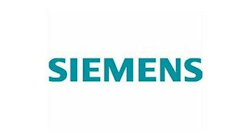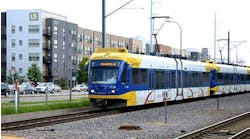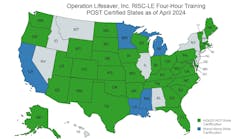With sleek railcars sliding along elevated tracks, South Korea's newest light railway is a smooth ride, and the hope is that it can avoid the fiscal train wreck facing similar projects.
But passenger estimates for the rubber-wheeled, driverless light rail transit (LRT) system, which will open to the public in Uijeongbu city north of Seoul on July 1, have already been scaled back.
And government researchers say the 11.1-kilometre (6.9 mile) stretch of line, which was built under a public-private partnership deal, will cost taxpayers 10 billion won ($8.6 million) a year for the next decade on top of the vast sums already spent.
"Other LRT projects in the country went awry but we believe this one will be different," said Lee Myung-Se, vice president of Uijeongbu LRT Co.
"Unlike other LRTs, there will be enough demand as it passes through the most populated areas and carries commuters fast to a station where they can transfer to the main subway line linked to Seoul."
The 15-station line took five years and cost 547 billion won ($469 million) to build -- 297.4 billion won from a South Korean consortium led by GS Engineering & Construction and 249.6 billion won from taxpayers.
The French unit of multinational Siemens won orders worth 157 million euros ($196 million) and hopes the project will pave the way for other LRT contracts in South Korea, one of the world's most densely populated large countries.
"An LRT system is quite ideal for Korean cities because of its flexibility and low costs compared to traditional heavy subway systems," Benoit Pirard, commercial manager of the project, told AFP.
Researchers for the national parliament are not, however, hopeful about the bottom line. The initial forecast in 2006 estimated daily average passengers at 57,000 but this was scaled back to 31,000 last year.
Based on the latest estimate, the National Assembly Research Service (NARS) predicted in April the line would likely lose 10 billion won a year for the next 10 years.
This means the city, with a population of 450,000, will have to pay up to 10 billion won a year to Uijeongbu LRT Co under a minimum revenue guarantee.
"In light of the size of the city's budget, it is true this leaves a considerable burden on us," Lim Hee-An, deputy director of the city government, told AFP.
"However, we think it is worth it to help ease traffic congestion."
With LRTs opening around the country, critics have accused politicians standing in provincial elections of exaggerating demand to push through "pork-barrel" projects in return for support.
And the NARS warned in a separate April report that LRT projects and most other infrastructure projects being privately financed under minimum revenue guarantees from local governments were like ticking fiscal time bombs.
Public-private partnerships were introduced when South Korea was engulfed by the Asian financial crisis in the late 1990s.
The NARS said they are now set to suck up 41 trillion won of taxpayers' money over the next 20 years, without taking LRT projects into account.
The country's first LRT, extending 24 kilometres (15 miles) between Gimhae and Busan on the south coast, opened last September amid fanfare.
But so far it has carried an average 31,000 passengers per day, just 18 percent of what had been predicted, according to NARS.
Unless usage improves, it will face a 1.6 trillion won bill over the next 20 years to compensate private investors who built the project.
Yongin's LRT, which is due to open in April, has been dogged by controversy over financial haemorrhages, corruption scandals and delays, while daily passenger estimates have been cut from 160,000 to 30,000.
Yongin city faces the prospect of repaying 1.8 trillion won to investors over the next 30 years, NARS said, even under a contract recently amended in the city's favour.
Another LRT line is being built in the northeastern Seoul district of Dobong, while eight other small projects are planned in the capital plus three in provincial cities, according to the construction ministry.
Yun Sun-Chul of watchdog group Citizens' Coalition for Economic Justice questioned whether these projects were worthwhile.
"Irresponsible pork-barrel promises, loose oversight and sparse consideration for effectiveness against costs are to blame," he said.
"The country really needs neutral experts to inspect election promises to examine whether they are economically viable and socially justifiable, before provincial authorities blindly set off on them."
ckp/sm/jms/emb
Copyright 2008 LexisNexis, a division of Reed Elsevier Inc. All rights reserved.
Terms and Conditions | Privacy Policy



